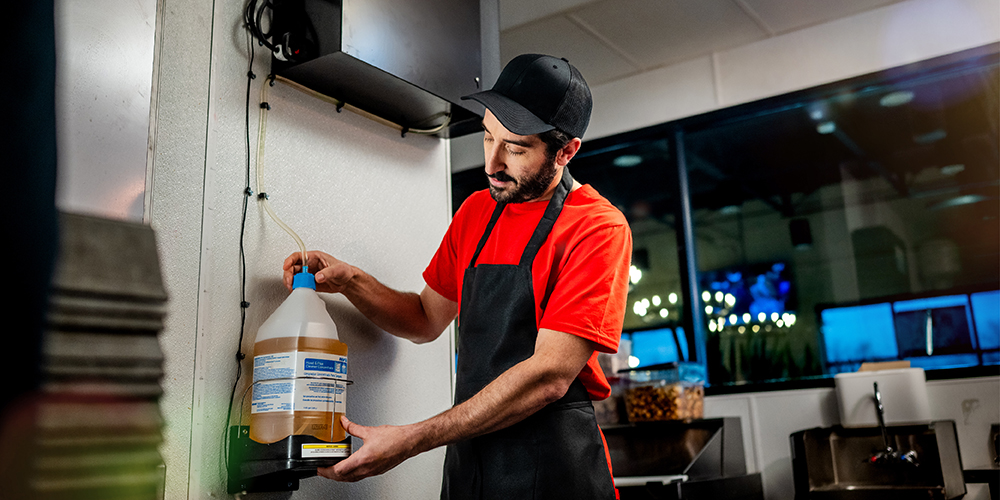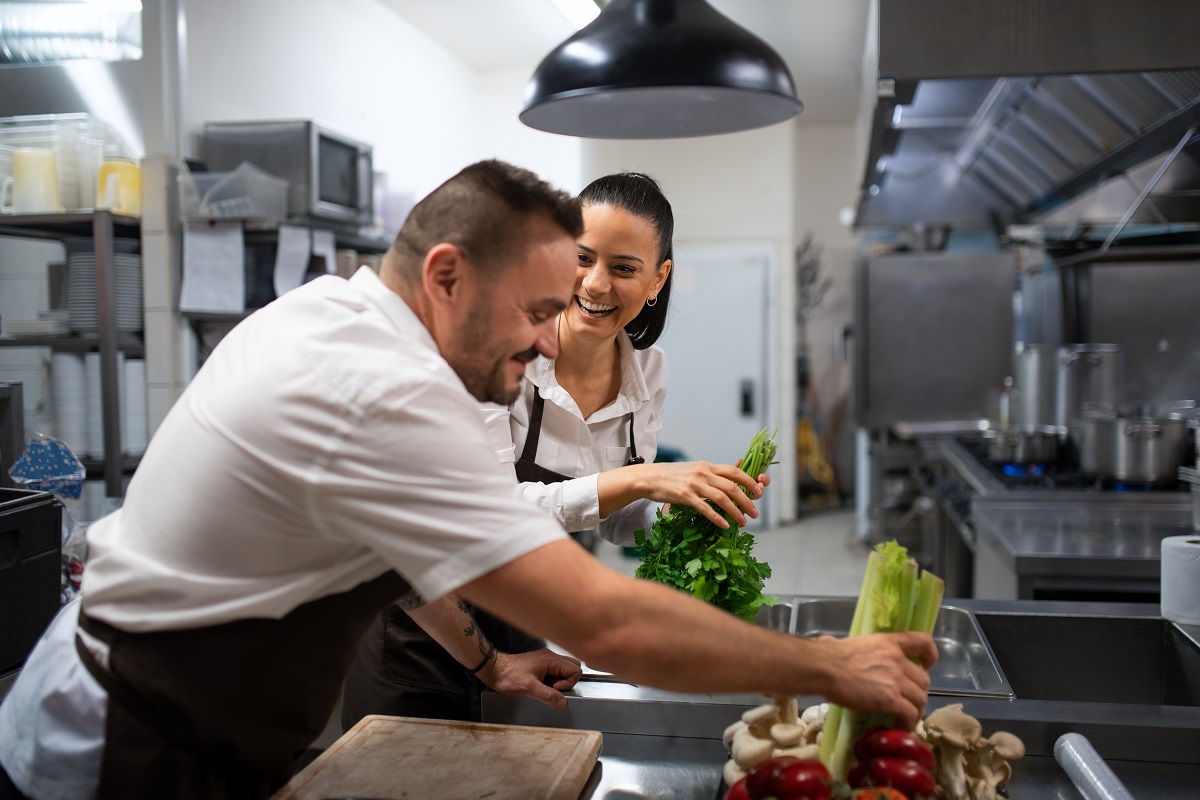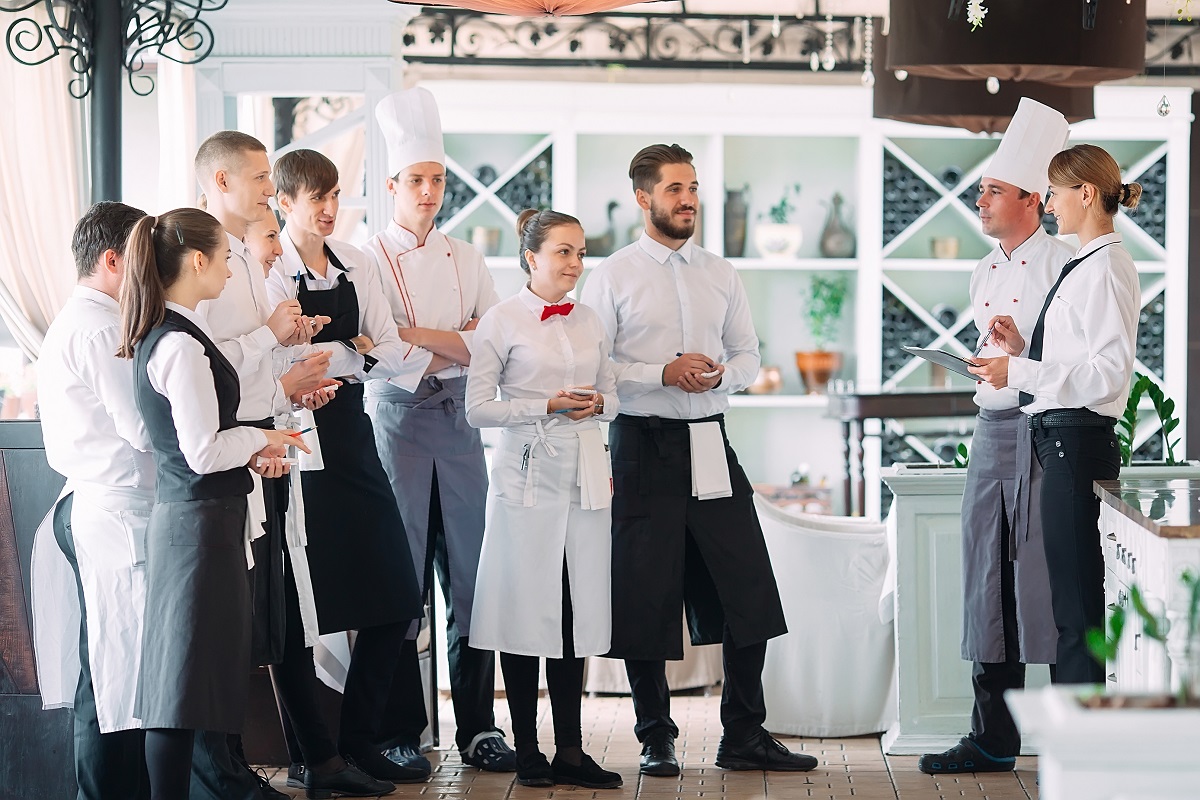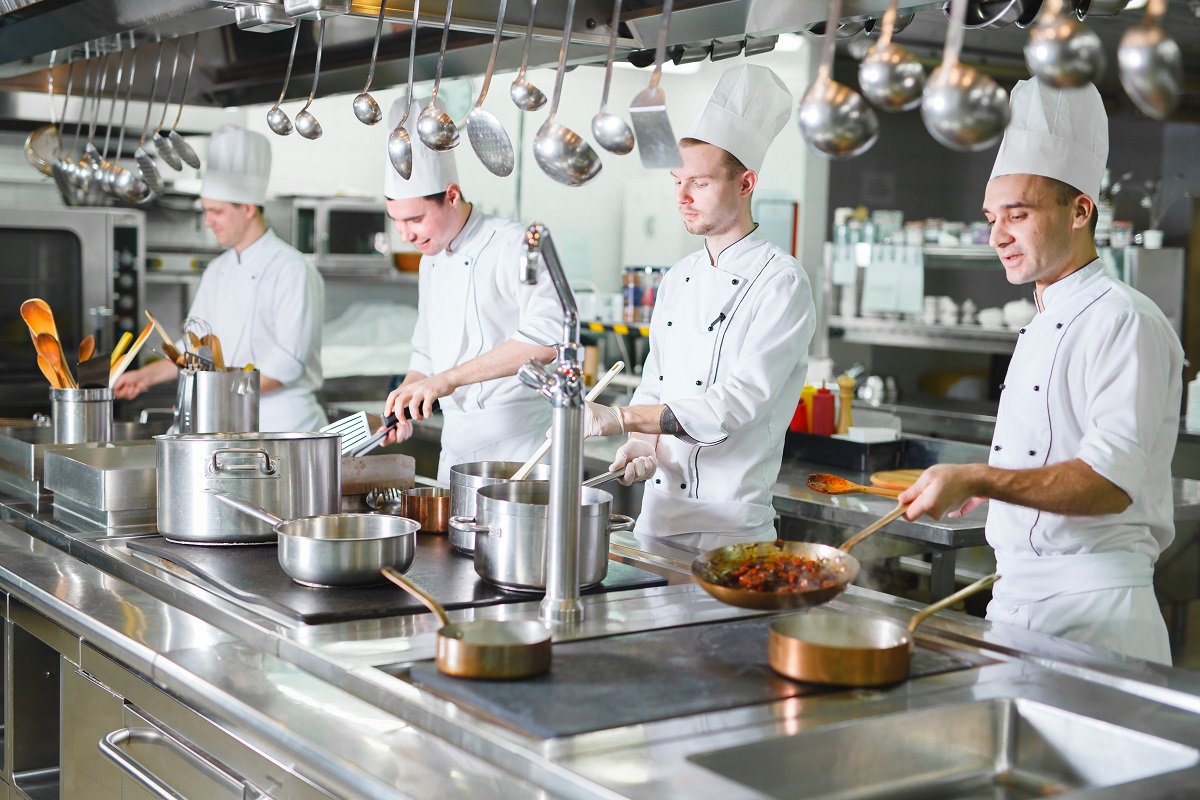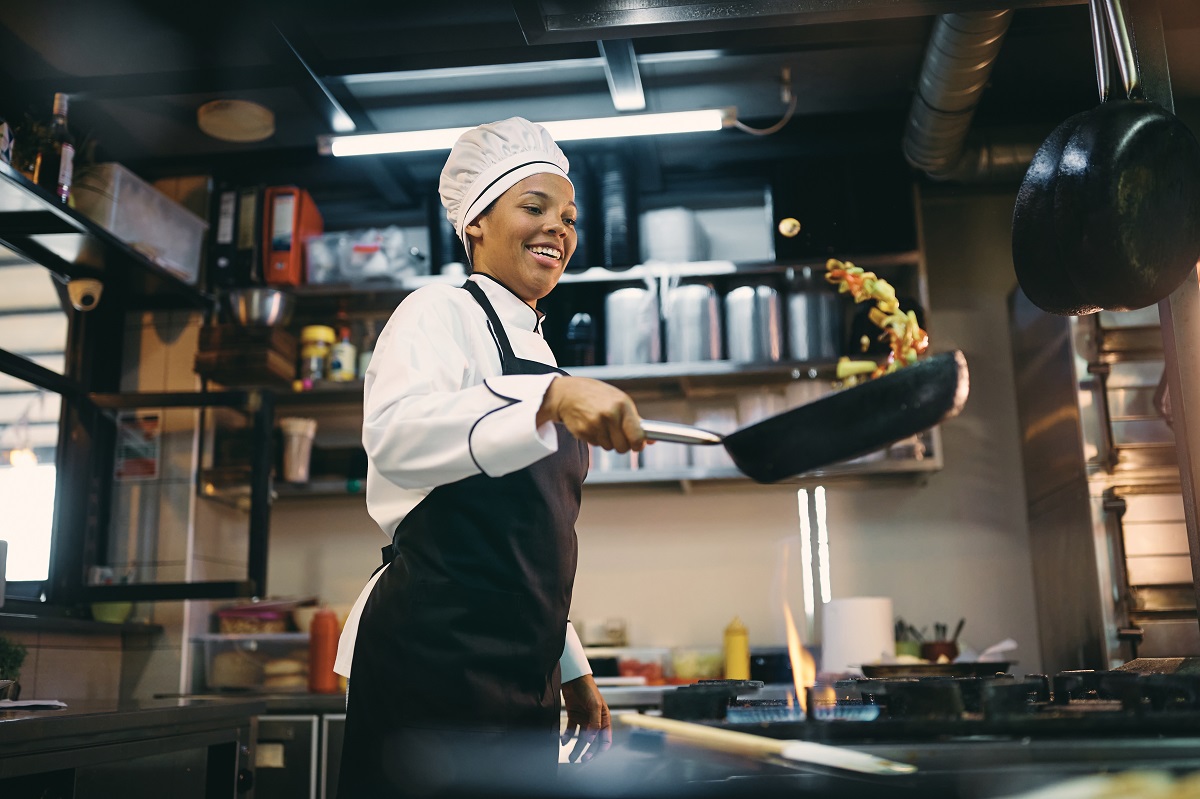From an outside perspective, the responsibilities of a restaurant manager may appear close to luxurious. You glide from table to table chatting with patrons, host pre-shift meetings to pump up your employees, and brainstorm with your executive chef on seasonal menus.
While managing a restaurant certainly offers these perks, you know that running a successful restaurant operation or being a successful restaurant manager involves much more than meets the eye. From preserving the quality of your cuisine to resolving customer complaints or meeting customer expectations, your days often pass by in a blur—and all the while, you must keep an eye on streamlining operations and turning a profit.
Fortunately, savvy tips for managing a restaurant abound—and we have the top ones. Here are five restaurant management tips to optimize your front-of-house and behind-the-scenes efforts for increased profitability.
#1. Maximize Efficiency in Daily Operations
One of the most important tips for managing a restaurant is a skill that often goes overlooked. Restaurants may shutter their doors at specific times but as anyone who has worked in the industry knows, it’s a 24/7/365 operation. Ensuring you have clean linens, updating your social accounts, and hiring new servers—work never ceases in a thriving eatery. This calls for superior efficiency in every major area of your establishment:
Streamlining Kitchen Workflow to Reduce Prep Time
A key part of a restaurant manager’s job description is being an effective kitchen manager and ensuring kitchen staff has a streamlined kitchen workflow. This helps guarantee that you serve only the highest quality fare while also minimizing waste, decreasing wait times, and maintaining a productive pace during peak hours.1 This is a skill that many experienced restaurant managers employ as they are looking to provide excellent customer service. To that end:
- Examine the layout of your kitchen to promote effortless movement between all restaurant staff and stations
- Establish or refine the First In, First Out (FIFO) practice to reduce waste and prep (and serve) dishes in a timely fashion
- Standardize ingredients, recipes, and prep procedures to accelerate kitchen staff in their food preparation2
Implementing Efficient Time-Tracking for Restaurant Staff Shifts
A crucial part of becoming a good restaurant manager means understanding that relying on technology is no longer an option for restaurants that hope to stay ahead of the curve and flourish. Integrating restaurant staffing or restaurant management software is an attractive must, allowing you to3:
- Monitor restaurant employee availability
- Track restaurant employee attendance and hours
- Communicate schedule changes
- Automate shifts
- Optimize labor costs
#2. Implement Strategic Inventory and Supply Chain Management
Strategic inventory and supply chain management has always been one of the most important responsibilities of a restaurant manager, but it’s become downright crucial in the face of soaring food costs, supply chain hiccups, and stock shortages.4 With this in mind, you may want to prioritize these tasks:
Conducting Efficient Inventory Audits to Minimize Waste
Performing inventory audits through an inventory management software is essential.5 Such systems enable you to view your kitchen from a holistic perspective and:
- Track the stock you have in supply
- Monitor food prices
- Satisfy customer demand
- Engineer menus according to ingredients
- Curb food waste and avoid spoilage
Building Strong Relations with Suppliers for Cost Savings
Whether you run an intimate, slow-food eatery that depends on local farmers or a huge establishment with multiple countrywide vendors, creating a solid rapport with your suppliers is imperative to keeping food on the table (literally and metaphorically).
In addition to honoring contracts with your suppliers and paying promptly, aim to establish trust and clear communication channels. This may pave the way for fewer delays, reduced food costs, and a more reliable flow of ingredients into your kitchen.
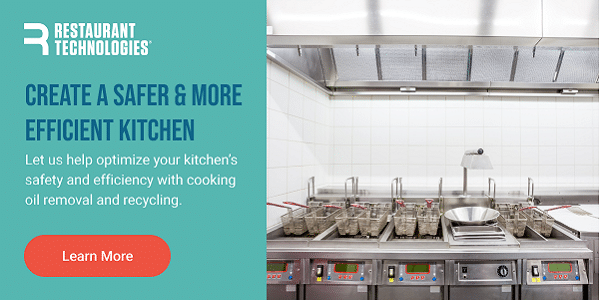
#3. Create Smart Menu Planning and Pricing
Calculated and creative menu planning and pricing can accomplish plenty, including boosting profits and strengthening customer loyalty.6
Designing a Menu That Balances Cost and Customer Satisfaction
Strategic menu planning hinges on three predominant elements: Your restaurant’s concept, your ideal customer (or established customer base), and your target profit margin. It’s a delicate balance between refraining from pricing your menu items too high—which may put off your patrons—and pricing your dishes too low, which could alter customer perception and cut into your profit.
This requires:
- Fine-tuning your restaurant’s theme and designing dishes that reflect it
- Refining your understanding of your “target audience,” including their age, occupation, and income level
- Studying your competition to ensure your prices are in line with the market and your customer’s expectations
- Identifying top-selling items and placing them strategically on the menu
- Omitting “poor performers” to minimize waste and food costs
- Calculating food costs x overhead x labor to arrive at the cost of each entry
Bolstering your bottom line also comes down to committing to a waste reduction program.7 Recycling, composting, environmentally responsible disposal, and automated cooking oil management (among other practices) can help you save time and money while elevating the public impression of your restaurant.
#4. Leverage Technology for Cost Savings and Efficiency
Technological advances have been veritable game changers in the restaurant industry, allowing restaurant managers to obtain complete visibility of their operations and providing multiple opportunities to automate tasks, decrease costs, monitor spending, and even expedite the hiring process. In addition to the inventory management and restaurant staffing software mentioned above, consider:
Utilizing POS Systems for Better Inventory and Sales Tracking
Point-of-sale (POS) systems have become the gold standard in hospitality for a reason: Functioning as an all-in-one platform composed of both hard and software, they’re arguably one of the most efficient ways to8:
- Monitor inventory
- Track sales data
- Handle guest payments
- Facilitate communication between BOH and FOH operations
- Manage guest information and customer loyalty programs
What’s more, POS systems can clue you into which items and promotions are performing well in real time, while also giving guests the chance to expedite their experience through online ordering and self-service kiosks.
Implementing Reservation and Ordering Systems to Reduce Wait Times
Long waits—to be both seated and served—have historically been one of the biggest gripes among restaurant patrons.
Technology can help you steer clear of fielding just such a complaint. Online reservation systems can be integrated into your POS and enable diners to book a table with the mere click of a button. (Online reservations can also reduce labor costs.) For fast food restaurants, breweries, and casual eateries, a mobile POS also allows customers to order—and pay—straight from their table without the need for wait help. Because who can argue with speed and efficiency when they’re hungry?
#5. Prioritize Financial Management for Long-Term Success
Delighted customers, diligent and loyal team members, and superb reviews—all are excellent accomplishments. But a fundamental responsibility for being a good restaurant manager is proactively, even doggedly overseeing your finances, ensuring your restaurant’s ROI is doing well. As such, you may want to master:
Regularly Reviewing Financial Reports to Identify Cost-Saving Opportunities
Technology specific to both the fluctuations and fast pace of restaurants gives you the ability to routinely investigate your financial health, conduct predictive analyses, and pinpoint cost-saving (and bottom line-boosting) opportunities, such as9:
- Adjusting your staffing requirements to accommodate economic shifts and seasonal demands
- Revising your menu to remain on top of fluctuating food costs
- Cross-training employees to handle matters during off-peak hours
- Eliminating poor-performing promotions and menu items
- Anticipating consumer and culinary trends
The key here is consistency. Only by staying apprised of your cash flow and revenue can you make decisions that support where you are now—and prep yourself well for the future.
Setting Budgets and Financial Goals to Stay on Track
Controlling costs is a cornerstone of successful restaurant management. A large part of this is setting a budget for each segment of your restaurant (such as labor costs, food costs, and food sales) that’s based on10:
- Variable costs, or costs that are prone to rise and fall, such as food costs and wages for hourly employees, and
- Fixed costs, or “set” fees like rent, utilities, salaries, and insurance
Further, building and preserving an emergency fund is vital, as any restaurant manager who navigated the pandemic knows.
With a budget in place, you can evaluate and establish financial goals and create a blueprint for reaching them. For some restaurants, this may involve amplifying their marketing efforts or holding more promotions. For other restaurants, it may be expanding their business to accommodate evolving dining trends like online ordering and delivery. Regardless of what your financial aims may be, they might become all the more feasible with these cost and time-saving restaurant management tips in hand.
Up-Level Your Eatery with Restaurant Technologies
From relishing the dynamic pace of industry life to developing bonds with your team members, there’s a great deal to love about helming a restaurant. And yet, it’s certainly not all about taste-testing delicious dishes and schmoozing with your patrons: The responsibilities of a restaurant manager are vast and varied.
Restaurant Technologies helps restaurant managers leverage the latest technology to help ensure that your back-of-house operations run as smoothly as possible. Whether you run a fine dining venue or a fast food franchise, we provide automated cooking oil management and automated hood-to-flue cleaning so that you and your staff can focus on what matters most: Delivering high-quality food and a stellar guest experience in a clean, safe, and inviting environment.
Contact us today to learn more about our cost-saving options—and bring new meaning to running a restaurant like a “well-oiled machine.”
Interested in related articles? Be sure to learn more about how to hire restaurant staff.
Sources:
- Incentivio. Mastering the rush hour: essential strategies for smooth restaurant operations. https://www.incentivio.com/blog-news-restaurant-industry/mastering-the-rush-hour-essential-strategies-for-smooth-restaurant-operations
- Wisk. Streamlining the kitchen: workflow strategies for an efficient and profitable kitchen. https://www.wisk.ai/blog/streamlining-the-kitchen-workflow-strategies-for-an-efficient-and-profitable-kitchen
- Perfect Venue. How to find the right restaurant staffing software. https://www.perfectvenue.com/post/restaurant-staffing-software
- Touch Bistro. 5 restaurant supply chain management best practices and tips. https://www.touchbistro.com/blog/restaurant-supply-chain-management/
- Booking Ninjas. The importance of inventory management. https://www.bookingninjas.com/blog/4-reasons-why-restaurant-inventory-management-matters
- Upmenu. Restaurant menu pricing: 10+ tips to boost menu profit. https://www.upmenu.com/blog/restaurant-menu-pricing/
- Upmenu. 20 tips to reduce restaurant costs & expenses (real examples). https://www.upmenu.com/blog/restaurant-costs/
- OpenTable. What is a POS system in a restaurant? https://restaurant.opentable.com/resources/what-is-a-pos-system/
- AppLova. 11 ultimate strategies for effective restaurant financial management. https://applova.io/blog/strategies-for-restaurant-financial-management/
- Homebase. How to create a restaurant budget in 7 steps. https://joinhomebase.com/blog/restaurant-budgeting/

